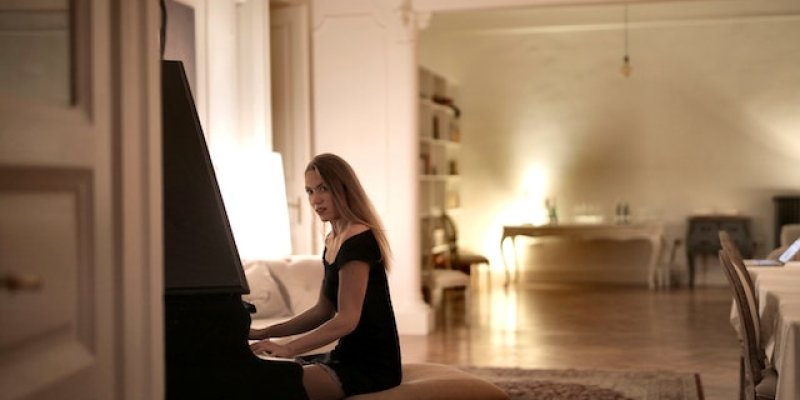
Imagine a peaceful night bathed in moonlight, where the world seems to slow down and take on a mystical aura.
Such moments of serenity and reflection have been beautifully captured in the realm of music through a genre known as the nocturne.
A nocturne is a musical composition, typically for solo piano, that reflects the quietude and introspection of the night.
The term "nocturne" is derived from the Latin word "nocturnus," meaning "of the night." Composers often use this form to convey emotions, ambiance, and sentiments associated with the nighttime atmosphere.
Melodic Elegance: Nocturnes are characterized by their graceful and lyrical melodies, often flowing gently like a stream under the moonlight.
Expressive Harmony: Rich and often chromatic harmonies create a sense of emotional depth, portraying both the beauty and melancholy of the night.
Subtle Dynamics: Nocturnes frequently have delicate dynamics, enhancing the intimate and introspective nature of the music.
Rubato: The use of rubato, the slight pushing and pulling of tempo, allows the performer to evoke a sense of freedom and natural ebb and flow.
Ornamentation: Ornamental flourishes and trills contribute to the intricate, embellished nature of many nocturnes.
Related Post: The Best Instruments For Meditation
The origins of the nocturne can be traced back to the 18th century, but it gained popularity in the early 19th century.
The Polish composer Frédéric Chopin is often hailed as the "father of the nocturne," as he elevated the form to new heights, infusing it with emotional depth and technical brilliance.
In the late 18th century, Wolfgang Amadeus Mozart crafted a series of pieces known as "Notturni," which translates to "night music" in Italian.
While not exactly synonymous with the later nocturne genre, these "Notturni" pieces showcased Mozart's ability to evoke nighttime sentiments through music.
They were typically serenades meant for evening outdoor performances, reflecting a different facet of the nocturnal ambiance.
The true transformation of the nocturne into a genre celebrated for its introspection and lyrical beauty emerged in the 19th century, particularly through the groundbreaking works of Chopin.
Chopin - Nocturne in E-flat Major, Op. 9, No. 2
Frédéric Chopin's Op. 9, No. 2, is arguably one of the most recognizable and beloved nocturnes. Its enchanting melody, characterized by graceful, cascading notes, immediately transports listeners to a moonlit dreamscape.
The piece's serene opening eventually gives way to a more impassioned middle section, showcasing Chopin's knack for blending tenderness with emotional intensity.
Debussy - Nocturnes
Claude Debussy, a master of Impressionism, infused the genre with his unique style, creating soundscapes that evoke the mysteries of the night.
Debussy's "Nuages" and "Fêtes," two of the three movements in his orchestral work "Nocturnes," paint vivid musical pictures of clouds drifting across the night sky and festive nighttime revelries.
These pieces embody Debussy's signature use of harmonies, textures, and timbres to evoke emotions and atmospheres, making them some of the most innovative nocturnes of the early 20th century.
Related Post: What Is An Etude, And Why Aren't There Any New Ones?
Field - Nocturne No. 2 in C minor
John Field, an Irish composer and pianist, holds a significant place in the history of the nocturne.
Often referred to as the precursor to Chopin's contributions, Field's Nocturne No. 2 in C minor showcases his distinctive style characterized by song-like melodies and elegant ornamentation.
This piece, composed before Chopin's emergence, laid the groundwork for the genre's future evolution, influencing composers who followed, including Chopin himself.
Samuel Barber's "Nocturne, Op. 33" is a modern example of the genre, showcasing the continued allure of the nocturne's introspective qualities.
Composed for piano, Barber's Nocturne embraces both the nostalgic and contemporary elements of the form.
The piece's evocative melody and lovely harmonies capture the essence of the night, while also reflecting Barber's 20th-century compositional language.
Quiet Evenings by Candlelight: As the sun sets and the world settles into stillness, the melodies and harmonies of nocturnes find their perfect match in the ambiance of a quiet evening.
Related Post: 5 Reasons Why Music May Sound Better At Night
Moments of Solitude and Reflection: Nocturnes are a perfect match for those moments when you seek solitude to reflect, whether after a long day's work or during a leisurely weekend afternoon.
Starry Nights Under the Sky: Listening to a nocturne while gazing at the stars adds an enchanting layer to the experience. Whether you're on a balcony, in your backyard, or lying on a grassy field, the music resonates with the cosmic mysteries above.
Reading and Literary Escapes: Combine the pleasure of reading with the soothing strains of a nocturne. The music provides an atmospheric backdrop to your literary journey, enhancing the emotions and themes of the story you're delving into.
Creative Expressions and Artistic Pursuits: Engaging in creative activities such as painting, writing, or sketching can be wonderfully complemented by the ambiance of a nocturne. The music fuels your imagination and provides an emotional landscape that enhances your creative process.
Restful Bedtime Rituals: Let the tranquility of a nocturne accompany your bedtime routine. Whether you're winding down after a busy day or seeking a moment of calm before sleep, the gentle melodies can help create a serene atmosphere that eases you into sleep.
Related Post: Conjunct Vs. Disjunct Melody - Two Main Forms Of Melodic Motion

As a session singer, writer, and producer that has worked with over 300 clients to provide high-quality jingles, singles, and features, Yona spends her time creating and marketing new music and helpful resources for creators. Check out Yona’s latest releases on her Spotify, her Youtube and share if you like it!
If you are in need of singer, songwriter or song producer services, see what Yona Marie can offer you on her services page.